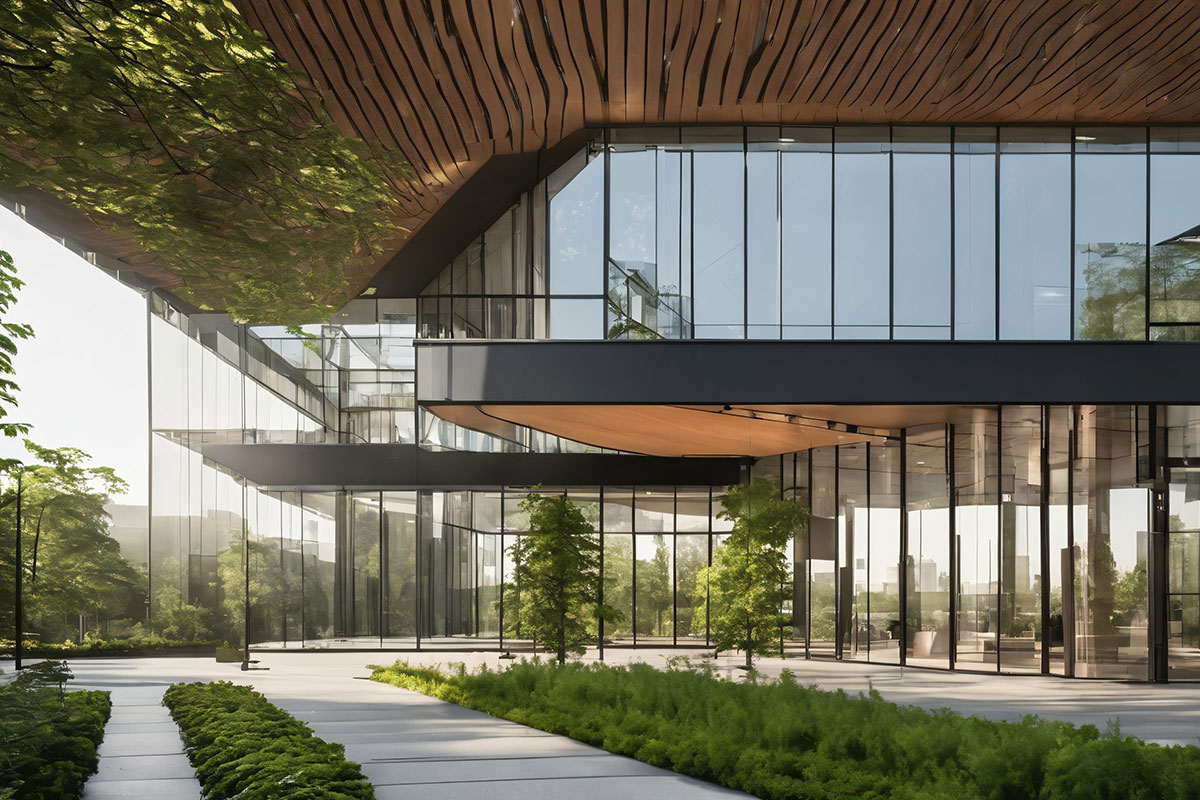As we embark on another year, the structural engineering industry is set to evolve with new methodologies and practices designed to drive sustainability and high-performance construction.
Here’s an in-depth look at what’s shaping the industry this year.
Sustainable Practices Lead the Way
Sustainability will be at the forefront of structural engineering in 2024.
The International Energy Agency has highlighted that buildings contribute 30% of global energy consumption and 26% of energy-related emissions.
Cutting these figures down is a massive priority across virtually every construction sector, from retail to education and residential.
The industry is responding by increasingly adopting green building materials and energy-efficient construction techniques to align with national and international emission reduction goals.
This extends to equipping buildings with renewable energy technologies like solar panels, wind turbines, and geothermal systems.
Clegg Associates is taking its own stance on sustainability and renewable energy, becoming carbon-neutral by offsetting our emissions through sustainable projects.
The Rise of Modular Building
Modular construction involves prefabricating building sections or modules in a factory setting and then transporting them to the construction site for assembly.
This offers numerous advantages, including reduced construction time, lower costs, and minimal on-site environmental impact.
Modular building aligns perfectly with the industry’s sustainability goals as it typically lowers waste and minimises damage to the site environment.
Furthermore, modular construction is increasingly viewed as a solution to building public sector infrastructure, offering a quicker and more cost-effective way to meet on-the-spot demand.
Advanced CAD
Advanced Computer-Aided Design (CAD) and generative design tools employing AI equip engineers with the ability to explore innovative design solutions with free-flowing, complex and organic shapes.
Advanced CAD systems enable the design of complex structures, integrating factors such as material properties, load-bearing requirements, and physical manufacturing constraints.
IoT in Construction
The Internet of Things (IoT) is revolutionising the construction industry by introducing smart technologies into buildings and construction processes.
IoT devices, such as sensors and connected systems, are used for a myriad of purposes, including predictive maintenance and energy management.
Predictive maintenance uses IoT sensors to monitor the condition of building systems and infrastructure. By analysing data from these sensors, maintenance can be performed as needed, preventing breakdowns and extending the lifespan of equipment.
For energy saving, smart sensors and systems can optimise energy use by automatically adjusting lighting, heating, and cooling based on occupancy and environmental conditions.
Conclusion
2024 will be marked by a concerted effort towards sustainable practices, technological innovation, and efficient construction methods.
These trends reflect the industry’s response to global challenges and a continued commitment to advancing construction practices for a more sustainable future.
Partnering with companies at the forefront of construction innovation, like Clegg, will put you in the best position to take on these trends and integrate them into successful construction projects.
